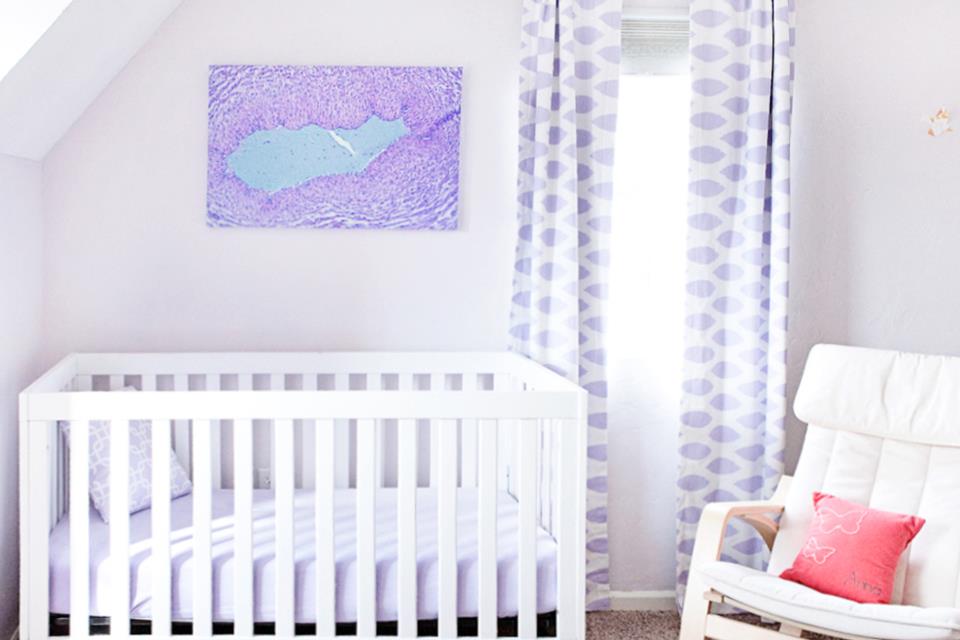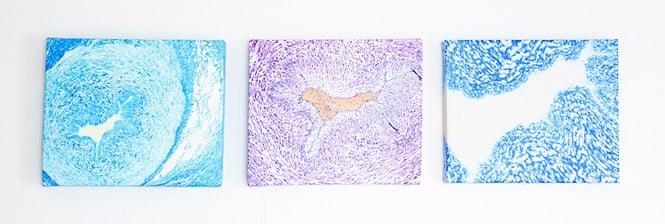Art World
New Parents Turn Kids’ Umbilical Cords into Art

Photo: Little Cord Art.


Photo: Little Cord Art.
Forget frying up that placenta or freebirthing: the latest trend in baby births just might be turning the umbilical cord into art, thanks to one Utah couple, reports Salt Lake City Weekly.
Stephanie and Keith Duffy made their first umbilical cord canvas in 2009, after the birth of their first child. Keith, a medical doctor with pathology training, was examining a sample of the cord under a microscope when he and Stephanie realized that the dyed specimen bore an uncanny resemblance to an abstract painting. They enlarged the photo and hung it on the wall, creating a unique work of art that commemorated the miracle of birth.

Photo: Little Cord Art.
In 2012, the couple officially launched Little Cord Art, run out of their own Salt Lake City lab, though they serve mostly out of state customers. New parents enlist their doctors (or, more likely, midwives) to give them a small sample of the baby’s umbilical cord. The Duffys provide a special container for transporting the sample, which they then dye in the color of the customer’s choice before magnifying the image 400 times, and then they print it on a canvas. The largest pieces cost up to $600.
“It’s the same process a pathologist would use to find a disease,” explained Stephanie in a phone interview with City Weekly. “We just use that process more artistically.”

A recent example of Little Cord Art’s work.
Photo: Little Cord Art.
“It’s a lot of fun, honestly, making a business out of it is just a bonus,” she added, promising that the unconventional artworks are “much prettier than [keeping] a shriveled up piece of umbilical cord.”
Despite the negative comments of social media haters who have come across Little Cord Art through TLC’s Parentables, pregnancy or parenting websites, or news outlets like the Huffington Post, Little Cord Art has no shortage of satisfied customers. “Once people buy from us they are into the idea,” says Stephanie. “It’s more the naysayers who just think that it’s weird.”